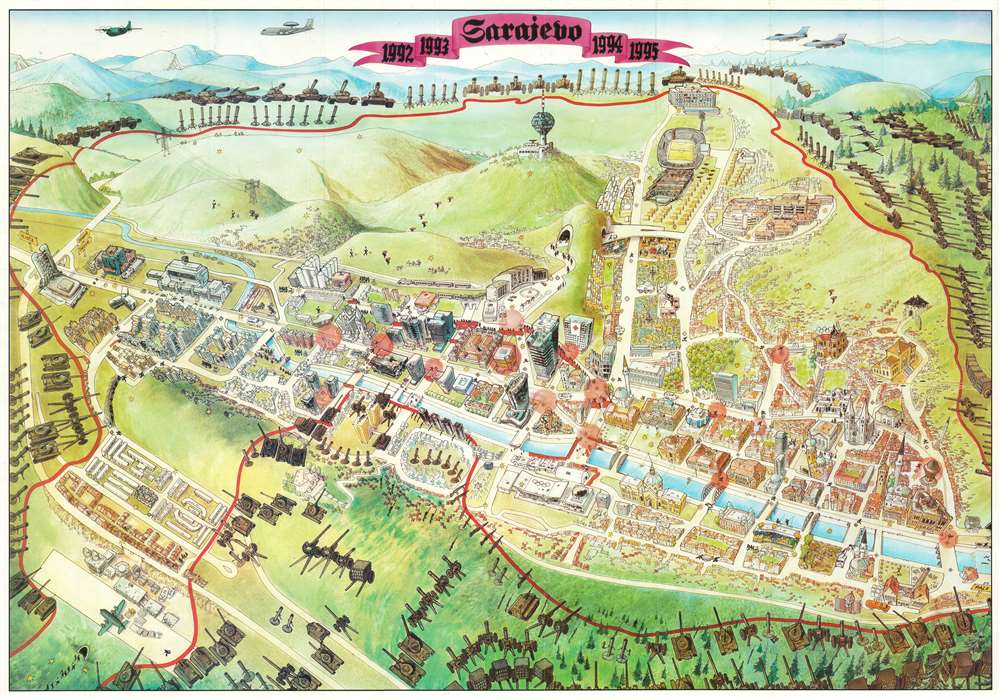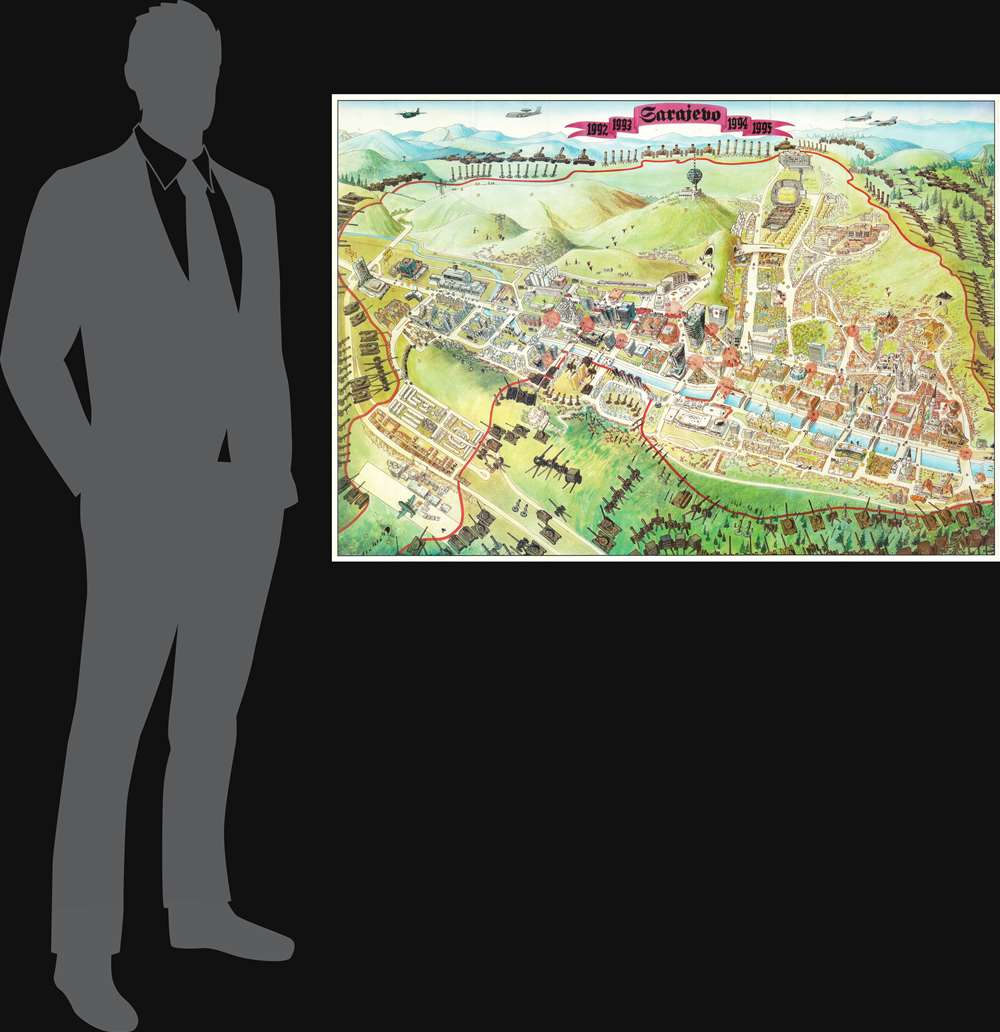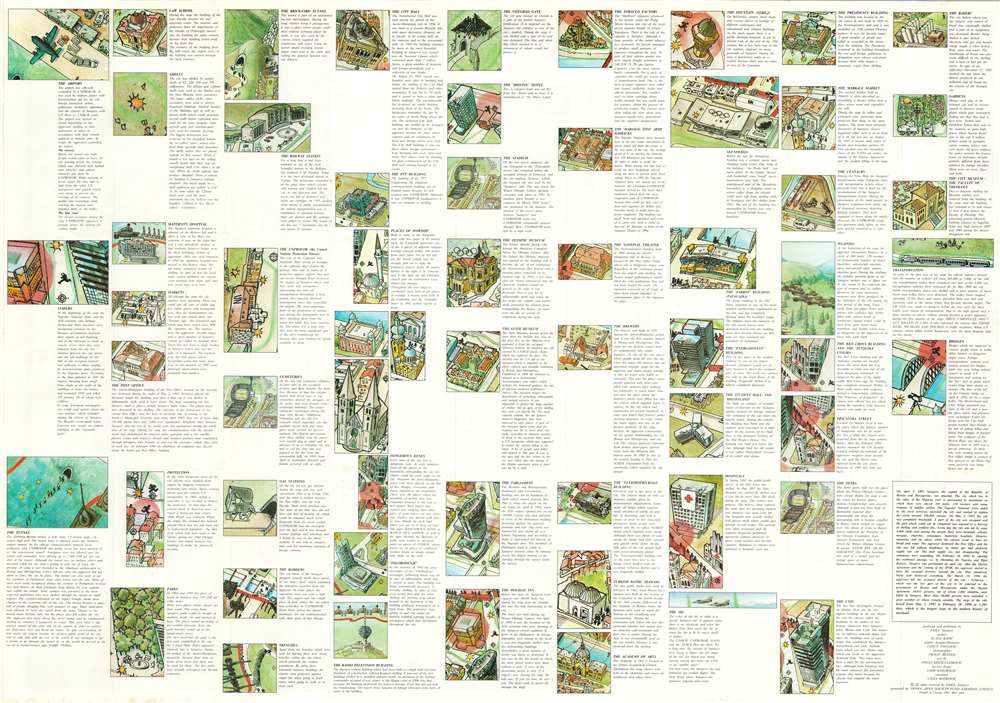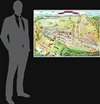1996 FAMA Pictorial Map of Sarajevo During the Siege of Sarajevo
Sarajevo-fama-1996-2
Title
1996 (dated) 27.25 x 39.25 in (69.215 x 99.695 cm)
Description
A Pictorial Map of a Tragedy
Acting as a visual reference to life under siege, sites such as 'Sniper Alley' (the main boulevard in Sarajevo known for its sniper nests), the Dobrinja-Butmir Tunnel (used to get members of the army and parliamentary officials in an out of the city - the U.S. Ambassador to Bosnia-Herzegovina Viktor Jaković also used it), and several buildings used by the UNPROFOR (United Nations Protection Forces) are illustrated. Hospitals, museums, the brewery, and other buildings are also referenced. Sniper crosshairs dot the map, underscoring the ominous and deadly reality of life in Sarajevo. Large red dots identify 'kill zones'.The Siege of Sarajevo
The siege began shortly after Bosnia and Herzegovina voted by referendum to declare independence from Yugoslavia. Bosnian Serbs, with the goal of creating a Bosnian Serb state, the Republika Srpska, encircled Sarajevo, stationing troops on the surrounding hills. Even though the Bosnian government defense forces in Sarajevo outnumbered the besieging Serbians by more than three to one, a lack of firepower rendered them inert. The besieging force bombarded the city daily and snipers were sent to clandestinely terrorize citizens. NATO did not intervene until February 1994, and it was not until February 1996 that the Bosnian government declared an end to the siege, following the end of the Bosnian War and the implementation of the Dayton Accords. 13,952 people, both military and civilian, lost their lives.Publication History and Census
This map was created by Suada Kapić, illustrated by Ozren Pavlovic, and published by FAMA in Sarajevo in 1996. Two examples of the map appear in institutional collections in the OCLC, both located in Slovenia. FAMA also published a collection of documents that include this map. The collection is held at the National Endowment for Democracy, the University of Michigan, Stanford, and the University of California Berkeley. The map is extremely rare on the private market. We have seen just one other example.CartographerS
FAMA International (Federal Agriculture and Marketing Authority) (1990 - Present) was founded by Suada Kapic in 1990 in Sarajevo, Bosnia and Herzegovina, as an independent media company. As the first independent media company in the region, FAMA aimed to be the CNN of southeastern Europe and provide information on the breakup of Yugoslavia and the Balkan War to those in the region. FAMA published a Sarajevo Survival Guide, written by Miroslav Prstojevic, in April 1993 and a second edition in April 1993. They also created a Survival Art Museum in 1994, which displayed 'Survival Art' created during the Siege of Sarajevo, and exhibited the work in . FAMA received the Sixth April Award of Sarajevo, the highest award bestowed by the city, in 2017. More by this mapmaker...
Suada Kapić (b. February 15, 1952) is an actor, author, and entrepreneur. Born in Sarajevo, Bosnia and Herzegovina, Kapić attended the University of Sarajevo and completed her first Bachelor of Arts degree in the Faculty of Philosophy before moving the Belgrade and completing a second Bachelor of Arts in Theater and Film Directing at the Faculty of Performing Arts. After the fall of communism, Kapić founded FAMA, an independent news agency aimed at becoming the CNN of Southeastern Europe. Will the breakup of former Yugoslavia and the Bosnian War, she became a refugee in her own city after escaping form her home in a district of Sarajevo occupied by Bosnian Serb forces. She resolved to stay in Sarajevo, and launched the 'Science of Survival' project, which also led to the creation of the 'Sarajevo Survival Guide' and the 'Survival Map'. After the end of the war, Kapić focused on creating an archive of oral and visual histories of the Bosnian War, which have now been digitized into the FAMA COLLECTION. Learn More...






